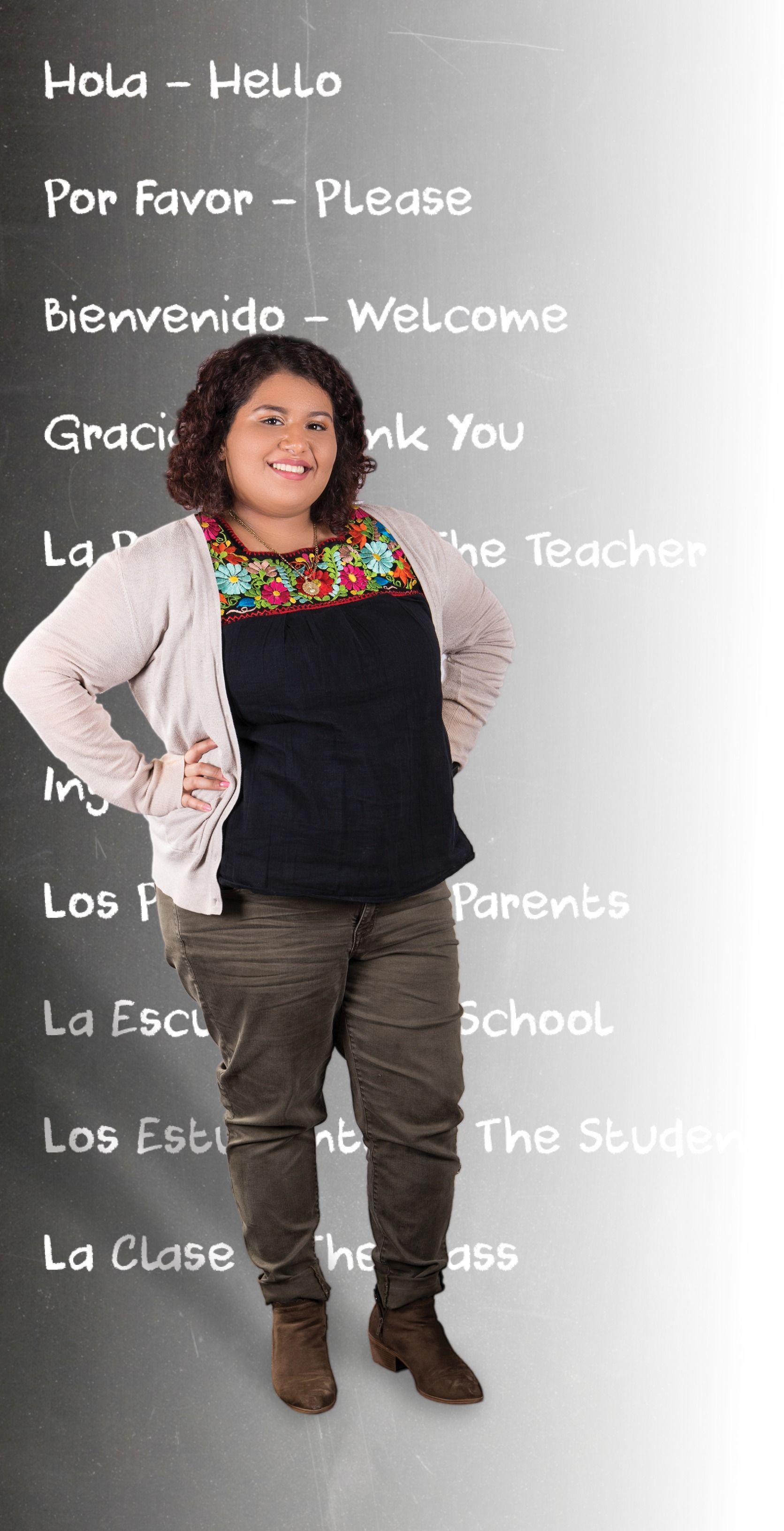
Martha Reyes can’t help but feel a special connection to students whose first language isn’t English.
Reyes, whose family is from El Salvador, spoke Spanish at home. Although she was U.S.-born, her English grammar wasn’t perfect. So, her Charlotte elementary school teachers recommended her for English as a Second Language, or ESL.
The message was clear: English only. The thought was that English comprehension improves by discouraging the first language. When a student who only spoke Spanish joined Reyes’ class, her teachers relied on her as interpreter. Only then was Spanish allowed.
Reyes, who came to UNCG for its School of Education, is anxious to return to her alma mater to teach second grade when she graduates in May. She’s especially eager to help those in her classroom who are learning English. That’s because she’s observed that attitudes and approaches in teaching English language learners, or ELLs, have changed little since she was a child. Even as student populations become increasingly diverse, most teachers are still at a loss in helping ELLs.
Reyes’ research with Dr. Jamie Schissel, assistant professor of teacher education, may help change that. As a former ESL teacher, Schissel has observed how traditional assessment practices can hinder learning and has focused much of her research on the integration of multilingual approaches into instruction and assessment, particularly for language classes. “Making use of learners’ multilingual resources holistically,” she has found, “is beneficial for language learning.”
Reyes first worked with Schissel on a project about integrating multilingualism into teacher education. Her analytical skills impressed Schissel so much, she asked Reyes to co-author a manuscript, now under review. Since then, they’ve begun another paper and presented at three conferences.
Last fall they traveled to Mexico, to examine multilingual approaches to classroom language assessments at the Universidad Autónoma Benito Juárez de Oaxaca. Reyes took part in an ongoing collaborative project with Oaxaca English instructor Julio Morales and his students.
Reyes observed Morales’ classes and interviewed students who spoke numerous Indigenous languages, in addition to Spanish and English. “Oaxaca is among the most linguistically diverse areas in Mexico, but speakers of Indigenous languages remain largely stigmatized,” she explains. “I conducted the interviews in Spanish, and I felt as though because we shared a common language, the students were more comfortable speaking with me.”
Students discussed their use of different languages in and out of the classroom and how that helped them learn English. Using Indigenous languages, they said, helped them with English pronunciation when there were phonetic similarities. It also helped when Morales used Spanish and English to clarify certain concepts.
“Mr. Morales’ multilingual approaches — rooted in honoring local knowledge traditionally excluded from the classroom— impact teaching and assessment in his class every day,” says Schissel.
Reyes believes U.S. teachers could better help ELL students by learning multilingual approaches through professional development.
“Sometimes I see that they don’t know what to do, so they just kind of ignore that they have a bilingual student who needs help,” she says. “Kids are pulled out for ESL instruction, but they spend the majority of time with the classroom teacher.”
Now Reyes can use her research discoveries in her own classroom — and share them with her colleagues.